|
|
Review GSM phone Motorola ROKR E2 Ц the last part
Motorola ROKR E2. Live pictures
Motorola ROKR E2. Part I
Motorola ROKR E2. Part 2
Motorola ROKR E2. Part 3
We can start describing the handset's musical possibilities with the most simple of them - radio There's no special software key to activate radio, but you can access it from the active menu (after you bind it there), which will lead to one-touch access. Unlike all handsets on the market, E2 has three bands, they're called FM1, FM2, FM3. There's no difference between them, they all have the same frequency setup setting Ц 0.05, and frequency band (from 87.5 to 108 FM). The reason for giving the radio three bands was kind of simple, you can add up to 9 stations for each band, group them. It's possible to give title for the station, the default one is its frequency. There ' s no RDS support in E 2.
Manual and Automatic search modes are available. Some stations that have low signal strength might be skipped when Automatic mode is in use, even though their reception quality is almost okay, and it's possible to add them via manual mode. There's quick station search, mute button (press *). Radio can work through the loudspeaker, it won't be a problem to minimize it either, station's name / frequency will be shown on the screen.
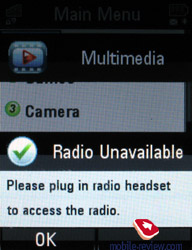 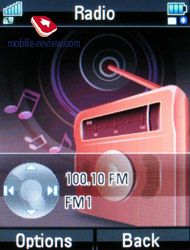
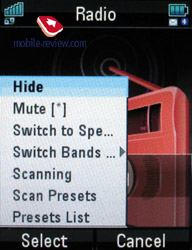 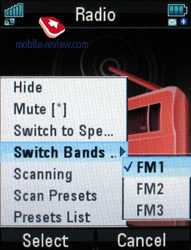
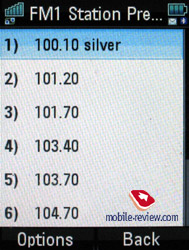 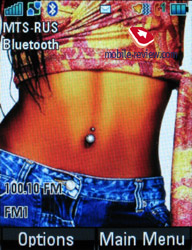
You can't switch between saved stations with the help of side-keys, instead you will end up searching for new station in automatic mode, pause button enables mute function, which can be turned off later. In order to switch the channel you will have to maximize the application and use up/down keys. As for me I'd have preferred to use the control keys in order to do that, instead of that we have search option, which is kind of useless.
The reception quality for radio is rather good and you can compare it with the one in Sony Ericsson's products, there aren't't too many differences between these two except for larger space for storing stations, slightly better sensitivity and stability.
FM-radio, videoclip (wmv, 6,75 Mb)
Music player. Music playback is ROKR E 2' s main mission . Here we can see that the manufacturers did their best in order to provide maximum possibilities for average consumer, who is interested in gaining quick results instead of spending huge amount of time on trying new software, changing wallpapers for the player, etc. No wonder there's music button present, its symbol is simple Ц a note. Pressing it will launch Music section in My Media folder. There you'll see such options as Playlists, Recently Played, Albums, Artists, Genres, Composers. You can choose each of them, depending on what you need. Basically these are sort of filters for files stored on your phone. Want to listen some hip-hop? Then go to Genres section, and so on. Information is acquired from ID 3 tags of mp 3 files .
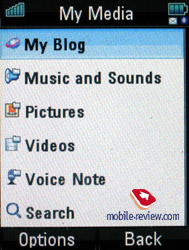 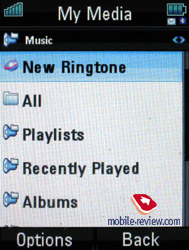
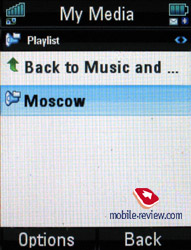 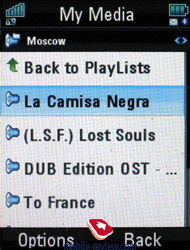
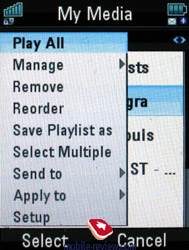 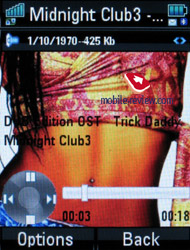
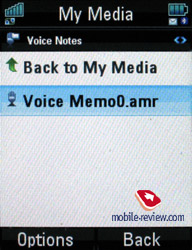 
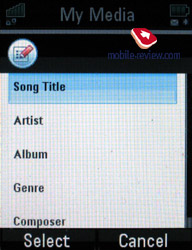 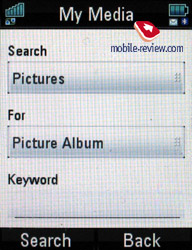
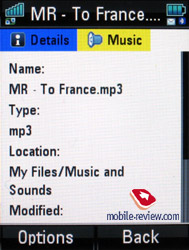 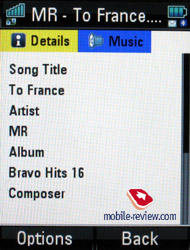
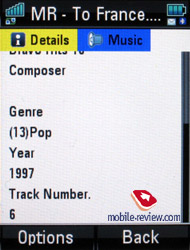
There's absolute freedom in creating playlists, you can choose several songs, or only a few during the playback. There aren't any limits in adding files, it doesn't matter if a file is located on the memory card or in the phone's internal memory. Playlists can be copied, renamed and saved again. You can choose certain songs from one playlist and copy it to another. All lists can be sorted according to your taste. The phone supports such modes as shuffle, intro (5 seconds from the beginning of each song).
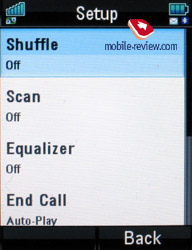 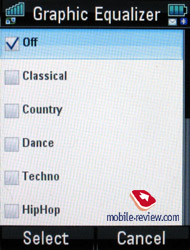
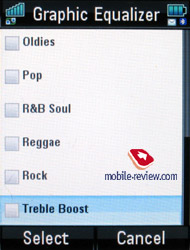 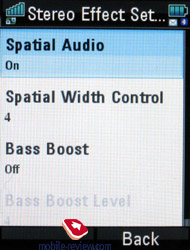
Music player has 12 equalizers, though you can't create your own. In my opinion the manufacturers did the right thing when they decided to name the equalizers according to the genres, and since there are quite a lot of them most people will be satisfied. For the first time in my life I had noticed major difference in switching equalizer tabs when listening music on the handset. Finally, here are the twelve settings: Classical, Country, Dance, Techno, HipHop, Latin, Oldies, Pop, R&B Soul, Reggae, Rock, Treble Boost.
Besides equalizers which are interesting, but don't have the УWOWФ tag on them, there's Spatial Audio option (virtualization of sound source, there aren't any analogues in mobile phones or mp3 players, this feature is unique). A very modest and poor analogue of Spatial Audio is Stereo Widening technology used in Nokia and Sony Ericsson products. Since we believe in the justice for all, it will be fair to say that Spatial Audio was first introduced in Motorola E1000, but that model didn't become a big hit among the consumers and the technology either.
Spatial Audio technology makes the sound volumetric , it actually gives the song sort of depth , which was unknown before . Unfortunately it's not perfect, you will notice slight defects when this feature is set to maximum (listening to music at maximum rate (7) was impossible for my ears even in noisy locations). You can try experimenting with the settings of Spatial Audio (7 positions) in order to find the best option for you. Using Spatial Audio for Soul and Reggae is a must, the sound becomes really juicy and clean. This is also a way to raise the volume of output signal, it becomes noticeably louder. On the whole player's volume in this model is very high, it's possibly one of the best players on the market, in case you connect analogue headphones you will certainly notice it. Volume bar has seven positions, the only place where listening to the music at maximal volume in Moscow is possible is the metro, otherwise it's just way too loud. Mediaplayer in action, video clip (wmv, 7,16 Mb)
Example of Spatial Audio usage. In this videoclip the technology is used starting from 7 th second and stops at 15 th . You will notice the difference in sound. I'd like to point out that this technology should be used in cooperation with headphones instead of speaker, only this way you will hear its true potential. Don't start arguing about it before you actually try it for yourself with headphones attached. Spatial Audio in action
(mp3, 324 Kb)
Bass Boost is here to stay for all those who love this function, once again there are 7 grades for setting up, switching between them will give obvious changes.
Choosing wallpaper for the player's display is an interesting additional option. There are times when the information shown in the player is not clearly seen on bright background (the font color is black), I recommend choosing something light instead of dark for better readability. Controlling the player is very easy, you can skip tracks by leaning joystick to the left or to the right, turn on rewind (just hold the joystick in the same directions). Pressing the joystick in vertical dimensions will enable or disable playback. Side-keys are used for same purposes. The rewind is not progressive, interval is capped at 5 seconds, you can't change it.
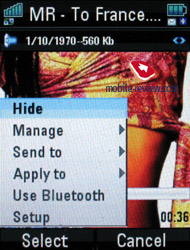 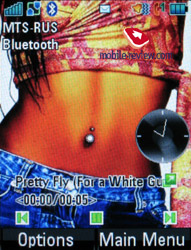
When player is minimized you can work with the rest of phone's features and functions, meanwhile when the display is in stand by mode you will see file name and the current position in the playlist on it. In order to maximize the player Ц just press joystick upwards. The phone supports A2DP profile, which allows sending sound to any stereo Bluetooth-headphones. There aren't any problems with that, everything works nicely. Full control over the player from the headphones is supported. The phone worked for whole 10 hours non-stop with Samsung SHB-100 stereo Bluetooth headphones connected. ROKR E2 has multimedia search option, it can be used for music files too. The phone is looking for song titles, allows detailing search by genre. As for photos, it's easier here, you search only for filename.
Mp3 file support is done without any defects, this phone is good at playing high bit rates, supports VBR. The handset is capable of handling the most complicated compositions because of high interface speed between memory card and the device itself. Short resume on mp3 realization is rather simple: the phone is equipped nicely, working with the player itself is comfortable, side-keys make it whole much easier to communicate. As to the sound quality, subjectively it is one of the best on the market, usage of Spatial Audio brings the phone on a whole new level, it does not have any direct competitors even among mp3-players (there are numerous technologies, but this one is one of the most perspective, and it is its first appearance in a massive product).
The phone has CDDB enabled, which means that it can receive information from network resources about current track, album title, author and so on. Unfortunately, at the moment it is not known if this feature will be available or not in the commercial sample. The player supports following music formats:
- RA v10
- AMR NB
- XMF
- AMR WB
- AAC
- WMA v9
- AAC+ Enhanced
- AAC+
- MP3
In future we might see ROKR E2 with iTunes preinstalled, just like we seen it in E1, but at the moment it is seriously weaker than Motorola's software.
Media Finder. The presence of memory card and its usage for storing multimedia files, as well as separate access forced the developers to work on file index refresh by the phone itself. When you access the menu in Media Finder you will see a splash-screen which offers you to update index. With 1gb memory card fully filled only with music files the operation takes around 2.5 minutes. Less size leads to less time spent, usually within 1 minute, or slightly more. A little hint for those who don't like waiting: the smaller ID3-tag is, the faster index is created. .
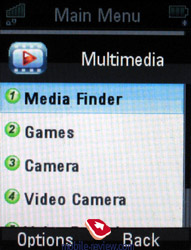
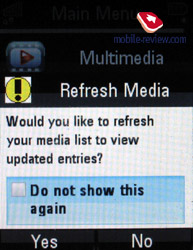 
In this section you can see folders divided into file types including the earlier mentioned music folders. Besides them there are folders for images, videos and voice memos. And as we said above , you can use search function for all of them .
Games . The phone has only one game preinstalled Ц Adventure Island , it's a simple but interesting arcade.
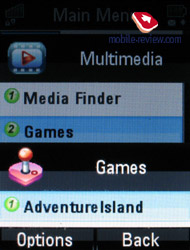 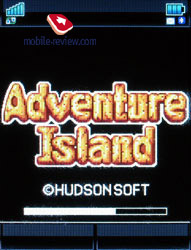
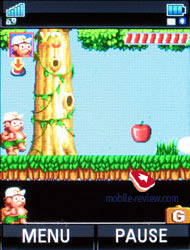 
Voice Recorder. The Dictaphone works in both stand by and talk modes. You can choose the default file name and memory type, in which the file will be saved. The length of the record is not limited by anything besides free space on memory card. While testing we managed to record 40 minute phone call without any problems. Recorded voice memos can be used as ring tones .
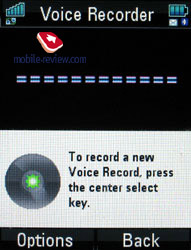 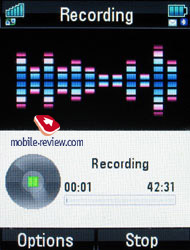
Camera . The phone has 1.3 megapixel camera with CMOS module . The settings aren't really rich, you can choose one of the available resolutions Ц 120x160, 240x320, 480x640, 1024x1280 pixels, compression quality (three grades). Pictures can be saved in both internal memory and memory card. It's possible to setup default name for photos. The shutter sound cannot be disabled (if the phone is turned to silent mode, then the sound will not be played). You can setup time- adn datestamp, frame and color effect (black and white shot, negative, antique). There's autotimer and automatic/manual flash activation (actually it's really strong and damages the photo's quality more than improving it), multi-shot session for 4, 6 and 8 shots is present too.
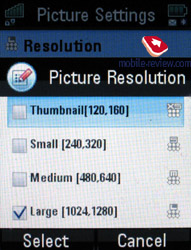
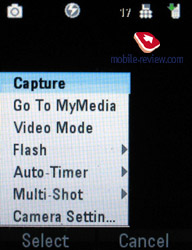 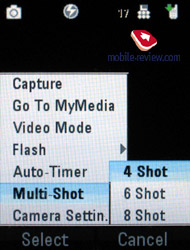
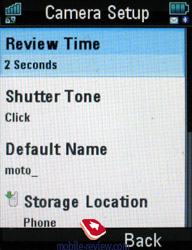 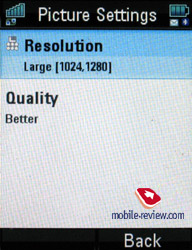
You can see the photo samples below, but I'd like to point out that while they're displayed on your phone's screen they look really nice, but after transferring them to your PC you will see that they are not so nice after all, once again this is because of the great display installed in ROKR E2. In case you need a good camera quality in your handset, E2 will not be the model you need, camera is more of a faculty then a prime feature.
|
|
 |
 |
(+) increase, 1024x1280, JPEG |
(+) increase, 1024x1280, JPEG |
 |
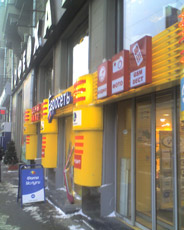 |
(+) increase, 1024x1280, JPEG |
(+) increase, 1024x1280, JPEG |
 |
 |
(+) increase, 1024x1280, JPEG |
(+) increase, 1024x1280, JPEG |
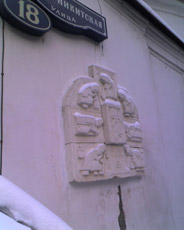 |
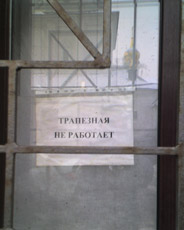 |
(+) increase, 1024x1280, JPEG |
(+) increase, 1024x1280, JPEG |
 |
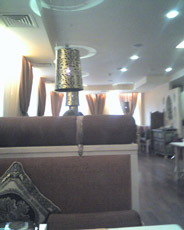 |
(+) increase, 1024x1280, JPEG |
(+) increase, 1024x1280, JPEG |
 |
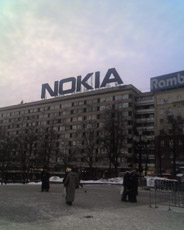 |
(+) increase, 1024x1280, JPEG |
(+) increase, 1024x1280, JPEG |
 |
 |
(+) increase, 1024x1280, JPEG |
(+) increase, 1024x1280, JPEG |
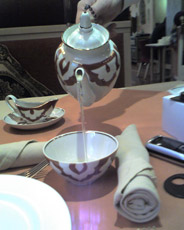 |
 |
(+) increase, 1024x1280, JPEG |
(+) increase, 1024x1280, JPEG |
Video can be recorded with and without sound in 3GP format. Two resolutions are available Ц 128x96 and 176x144 pixels. The video quality is below average, but there are no limitations for length. You can set the video clips as wallpapers or assign them to contacts in phonebook (in that case the video will replace the photo if one exists, even though it will remain present in contact's info), in order to do this you should go to video folder. In the video playback mode you can choose full-screen horizontal mode. Video example 1 (3GP, 395 Kb)
Video example 2 (3GP, 273 Kb)
Video example 2 (3GP, 158 Kb)
Y Portal. Central button of the main menu stands for Yahoo Portal, this is the result of cooperation between Motorola and Yahoo. News, Articles, Weather Forecasts Ц just go to Y Portal menu to experience it all. There's no big need in sticking to Yahoo, especially because the phone has fully-functional html-browser which allows you to visit any sites you like. Just think about Y portal as a bookmark
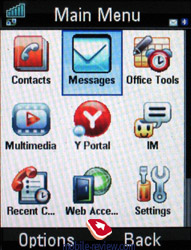
Opera 8 is a standard browser, cookies are supported, you can scale the pages for your screen size, change font size and choose from great amount of other settings. In any case this software was interesting before Opera Mini was released, at the moment there's no big demand for Opera 8, however some of the users might like it. Comparing to ordinary phones built-in browser in E2 looks advantageously.
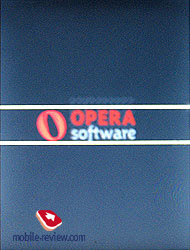 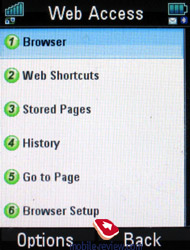
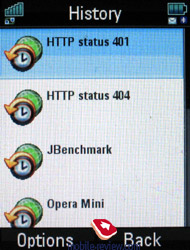 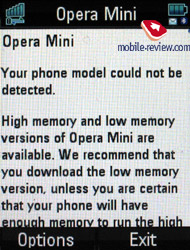
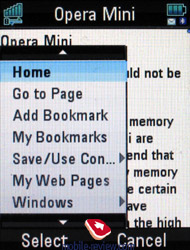 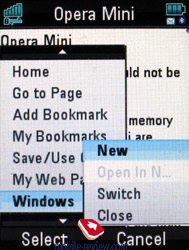
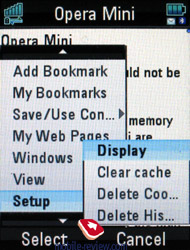 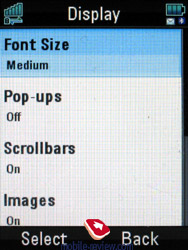
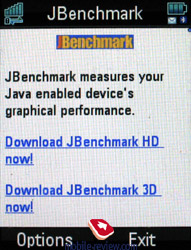 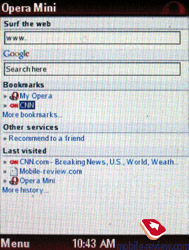
IM. Instant Messaging service, you should use Yamigo for that, this way you will have access to ICQ as well as AOL and MSN. There's nothing much to say about this service, everything is easy and simple.
Settings. Motorola was ignoring global tendencies and preferred to follow its own path. Finally in E2 we see that the long-awaited features that users demanded are implemented, take profiles for example. There are 8 default profiles, and users can customize them as well as create their own. There are a lot of profile settings to choose from, we will list only the main ones: ring type (ringtone only, ringtone and vibrating alert, vibrating alert followed by ringtone). Volume can be setup for ringtones, service tones and mp3 player. An interesting fact: the phone will save volume setting for player, however it will be different for the radio (radio's volume will be saved too), I mean they are not connected in that thing. The logics is very simple Ц radio's signal is usually weaker, which means that higher volume is required, and for good-quality songs this is not needed. A very simple technical solution which makes our lives better. After single volume setting for radios and mp3 players in Nokia and Sony Ericsson products the absence of requirement to setup volume each time you switch from one source to another is a real joy. As a matter of fact you can create profiles dedicated only to player's volume, and since you can switch profiles within two key-presses this action is rather logical. Alerts can be setup for all standard applications: contacts, events, organizer, email, IM, alarm clock. Finally, the phone has flight mode during which the network part of the phone will be disabled, meanwhile other features will remain available.
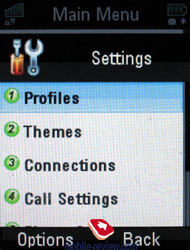 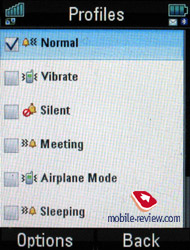
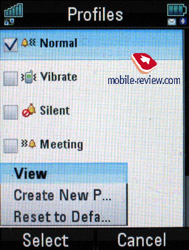 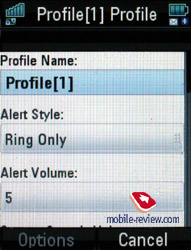
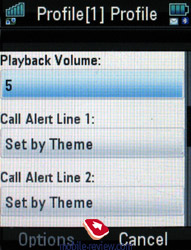 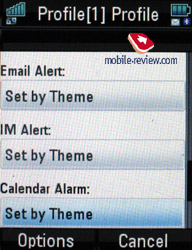
Themes Ц there ' s a certain difference from the triplets , the main menu icons are not switched by theme changed , but you can do it on your own . Instead of that themes can change window appearance, color schemes; there are three themes preinstalled.
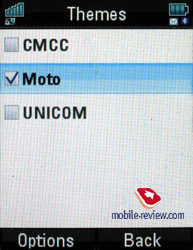 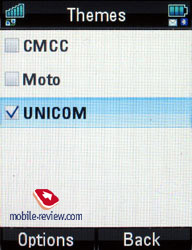
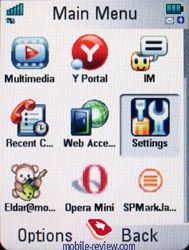 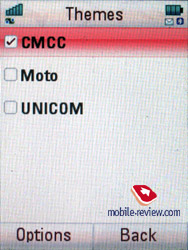
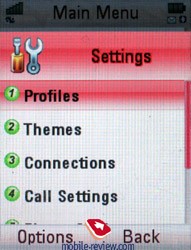 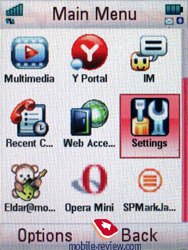
Connections. Since there's no IrDA port Bluetooth is the only way to connect with outside world. Bluetooth manager is presented in a very interesting way, it's made of two bookmarks. On the first one you see the list of devices that our phone had interacted with, even if they are not bounded to it. On the second bookmark you can search for all available devices. It's possible to use a more specific search: phones, headsets, PCs, PDAs, printers. E2 becomes visible for only 3 minutes, this time became standard for Motorola's products.
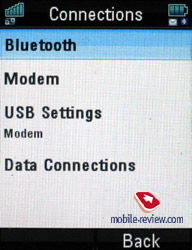 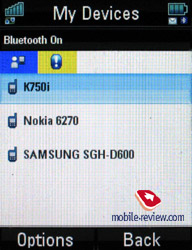
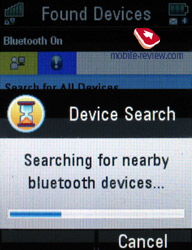 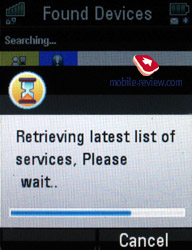
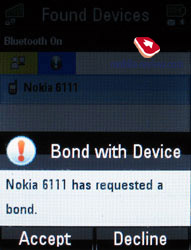 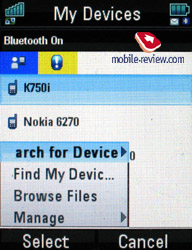
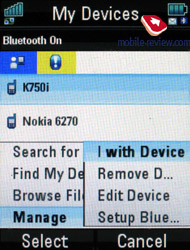 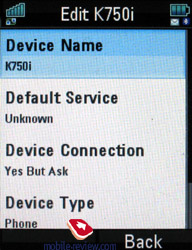
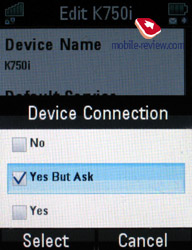 
As for important settings: you can choose the place to store incoming files, we recommend using external memory for that.
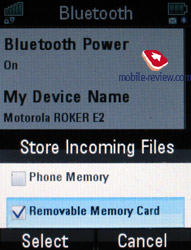 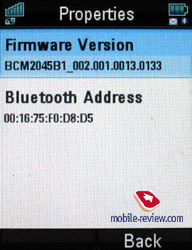
The phone supports wide set of profiles, all main profiles including A2DP are here, as well as the ability to print on the Bluetooth-compatible printers. The version is 1.2, but unlike other Motorola's products this one allows browsing of file system at other devices (GET method).
That's not all, more surprises on their way. When you are sending file to other device, through context menu you will see the same Bluetooth manager, but next to device list you will see checkboxes. Have you already guessed why we need them? In case you did not, here's the answer to the riddle: you can send 1 file to several devices at once. And actually this feature is quite handy, especially when everybody wants to get a hold of your brand new ringtone. But it's better to be precise, the file will not be sent simultaneously to all devices, this operation will be done step by step, through the download manager.
Modem . Modem settings with wireless connection or USB connection, automatic modem launch setup is present too.
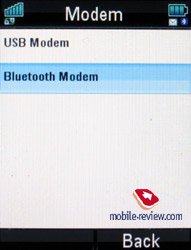 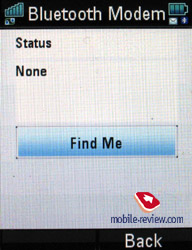
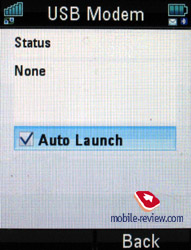 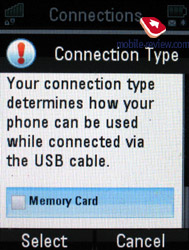
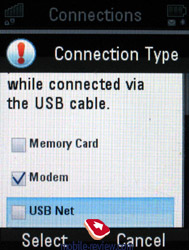 
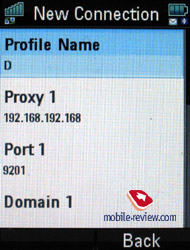 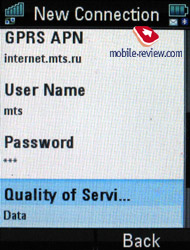
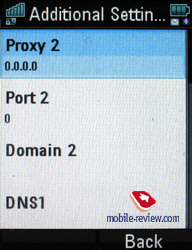 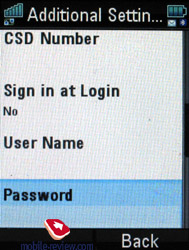
Data connections. Here you can use either wap-protocol or internet APN. The settings are quite simple, there's nothing complicated about them.
Phone settings Ц for the first time in Motorola's history a product of such class does not have those Basic settings, other settings, and other nonsense. Everything is organized clearly and logically. In phone settings you can define display settings, time and date, language, input language, see battery's level in % (more detailed way than simple battery icon), switch on energy saving mode. The phone supports firmware updates over the air, there's corresponding option in the menu list. Some interesting settings: it is possible to disable voice dialing when pressing button on the headset, disable or enable automatic answering.
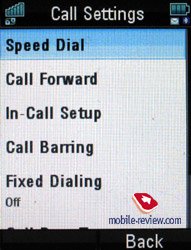 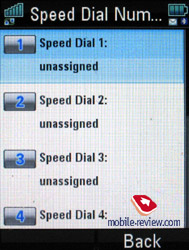
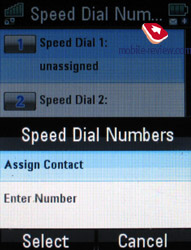 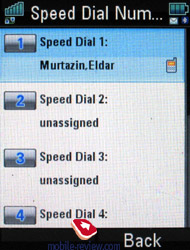
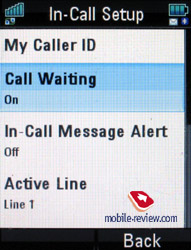 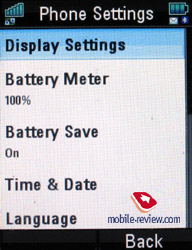
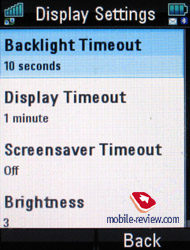 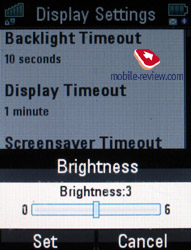
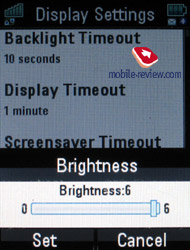 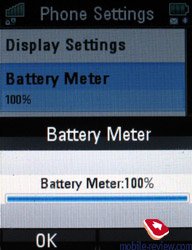
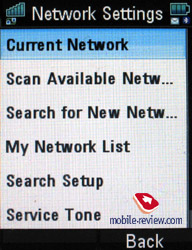 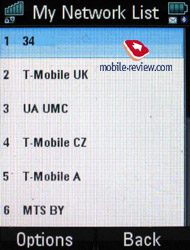
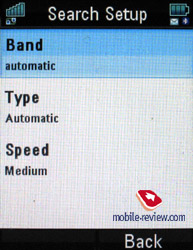 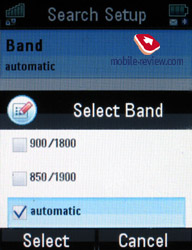
Security Ц the phone has common phone block, it can be used only when the phone gets turned on or at any moment you like. It is also possible to set password for entering Messages, Calendar and Contacts menus, without entering the password these applications will not launch.
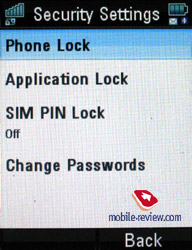 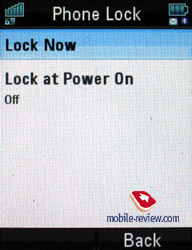
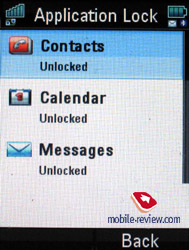 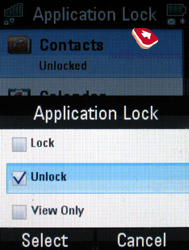
Call list and other phone functions. There are three lists with 20 entries in each. Same numbers are not summing up, they remain as separate entries. The phone displays name and surname of the contact together with icon symbolizing the phone type. In the joined list (fourth on the list) you will see 20 last entries from three usual lists. You will see what kind of call it was with the help of icons. In case you are interested in details, you can look-up date and time of the call, as well as its length. You can switch between then lists by pressing * or #.
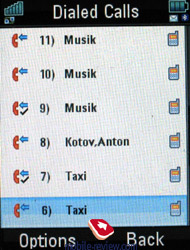 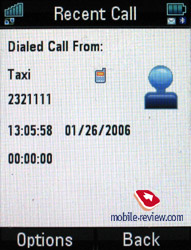
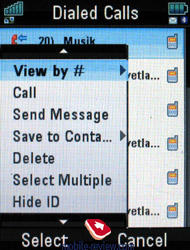 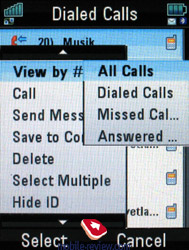
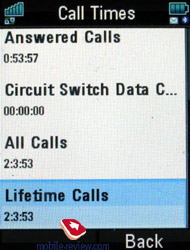
During incoming call the photo takes up quite big part of the display, contact's name or his/her phone number are displayed too. When a message is received you will see the sender's phone number in case it's not present in the contact book. You can activate Dictaphone with side-key during the call, you can also send sound to Bluetooth headset and make other standard actions. During the call there's timer ticking, at the end of the call you will its length.
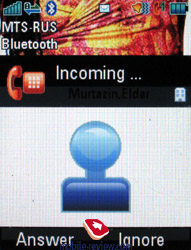 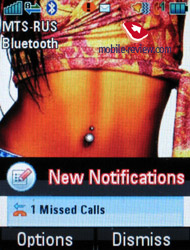
 
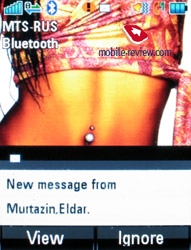 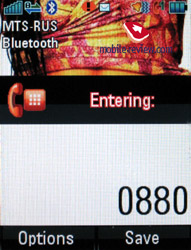
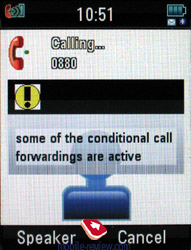 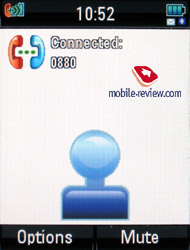
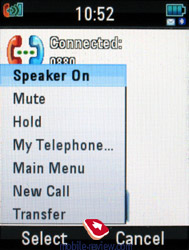 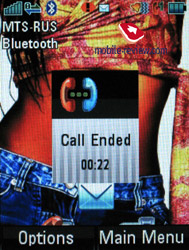
Often used numbers are seen not only in the phone book, but in messages and email creating sections too. This is extremely convenient, allows saving some time.
Java. Heap size for applications is - 2 mb, there's no limitation for JAR-file size. You can install java applications through wap or from other devices directly. The applications can be stored on the external and internal memory, it doesn't really matter where you keep them. The applications can work minimized, this means that JIMM (ICQ client) can be used with great deal of comfort. It is possible to setup custom security settings for each applications. Unfortunately you cannot override annoying security issues (except for the applications with available security certificate), which are kind of similar to the ones in Sony Ericsson's devices.
Phone's performance. The presence of Intel's XScale processor working at 208 mhz makes this phone the champion in its class. There's no 3D acceleration in 3D applications, but the results are still astonishing. Enough talking, look for yourself, E2 can be compared only with smartphones. SPMarkJava06
2D Game: 26.7 FPS
3D Game: 7.9 FPS
Fillrate: 183 kTexels/s
Polygon Throughput: 33.9 kVertices/s
PNG Score: 74
PNG Encode: 27 kPixels/s
PNG Decode: 205 kPixels/s
JVM Score: N/A
32bit Add/Subtract: 65814 kOps/s
32bit Multiply: 65511 kOps/s
32bit Divide: 1825 kOps/s
32bit Array Access : 32794 kOps/s
32bit Conditional Code: 15534 kOps/s
64bit Add/Subtract: 30457 kOps/s
64bit Multiply: 18990 kOps/s
64bit Divide: 293 kOps/s
64bit Array Access: 13556 kOps/s
64bit Conditional Code: 11867 kOps/s
32bit Float Add/Subtract: 2766 kOps/s
32bit Float Multiply: 3346 kOps/s
32bit Float Divide: 1450 kOps/s
32bit Float Conditional Code: 20 kOps/s
64bit Float Add/Subtract: 1130 kOps/s
64bit Float Multiply: 1166 kOps/s
64bit Float Divide: 354 kOps/s
64bit Float Conditional Code: 4944 kOps/s
Tangent Function: 38 kOps/s
Sine and Cosine Functions: 40 kOps/s
Square Root: 1 kOps/s
Static Method Call: 3101 kOps/s
Object Creation: N/A
Array Copy: 291 MB/s
|
ROKR E2 |
W810i |
| JBenchmark 1 |
7177 |
3082 |
Details |
| Text |
1835 |
747 |
| 2D Shapes |
1950 |
779 |
| 3D Shapes |
1036 |
485 |
| Fill Rate |
621 |
421 |
| Animation |
1735 |
650 |
Screen Width
|
240 |
176 |
Screen Height
|
247 |
176 |
Color Screen
|
true |
true |
Number of Colors
|
262144 |
65536 |
Double Buffer
|
true |
true |
Total Memory
|
1048576 |
1048512
|
Free Memory
|
439624 |
946976
|
CLDC - 1.1.1 |
Microedition Profile MIDP-1.0 MIDP-2.0 |
ISO-8859-1 |
|
ROKR E2 |
W810i |
| JBenchmark 2 |
282 |
3082 |
Details |
| Image manipulation |
353 |
178 |
| Text |
808 |
354 |
| Sprites |
410 |
209 |
| 3d Transform |
691 |
253 |
| User Interface |
22 |
51 |
Screen Width
|
240 |
176 |
Screen Height
|
247 |
176 |
Color Screen
|
true |
true |
Number of Colors
|
262144 |
65536 |
| JPEG Support |
true |
true |
| Transparency (Alpha Level) |
4 |
254 |
Total Memory
|
1048576 |
1048512
|
Free Memory
|
586676 |
910240
|
CLDC - 1.1 |
Microedition Profile MIDP-2.0 |
Microedition Platform: j2me
|
Microedition Encoding: ISO-8859-1
|
|
ROKR E2 |
W810i
|
| JBenchmark 3D HQ |
2 |
103
|
| JBenchmark 3D LQ |
213 |
166
|
| Triangles ps: |
24679 |
13156
|
| kTexes ps: |
1973 |
860
|
| Screen(canvas)width: |
240 |
176
|
| Screen(canvas)height: |
320 |
220
|
3D Subsystem |
| M3G Version: |
1 |
1 |
| Antialaising: |
false |
false
|
| True color: |
false |
false
|
| Dithering: |
false |
false
|
| Mipmapping: |
false |
true
|
| Perspective correction: |
true |
true
|
| Local camera lighting: |
false |
false
|
| Max lights: |
256 |
8
|
| Max Viewport dimensions: |
1024 |
1024
|
| Max Texture Dimensions: |
1024 |
256
|
| Max Sprite Crop Dimensions: |
1024 |
1024
|
| Max Transforms Per Vertex: |
2 |
3
|
| Number of Texture Units: |
2 |
2
|
Other properties: |
| Color Screen |
true |
true
|
| Number of colors |
262144 |
65536
|
| Transparency (alpha level) |
4 |
256
|
| Double buffer |
true |
true
|
| Total memory: |
1048576 |
1048512
|
| Free memory: |
434300 |
896512
|
MicroEdition Configuration
|
CLDC-1.1 |
CLDC-1.1
|
MicroEdition Profiles:
|
MIDP-2.0 |
MIDP-2.0
|
Microedition Platform:
|
j2me |
j2me
|
Microedition Encoding:
|
ISO-8859-1 |
ISO-8859-1
|
Microedition Locale
|
en |
en
|
Microedition Communication ports:
|
USB1 |
null
|
| Microedition Hostname: |
null |
null
|
3.1.0 |
|
ROKR E2 |
W810i
|
Rendering Quality: |
Bilinear filtering:
|
Failrule (61%) |
Failrule (69%)
|
Trilinear Filtering:
|
Not supported |
Not supported
|
Perspective correction:
|
Failrule (64%) |
Failrule (58%)
|
Z-buffer depth:
|
16 bit |
14 bit or higher
|
Perfomance: |
Smooth triangles:
|
52219 |
19070
|
Textured triangles:
|
8456 |
12057
|
Fill rate:
|
850 kTexels |
432 kTexels
|
Gaming:
|
19 (0.6 fps) |
54 (1.8 fps)
|
4.0.3 |
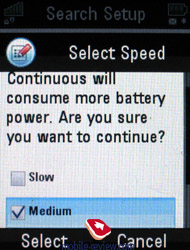 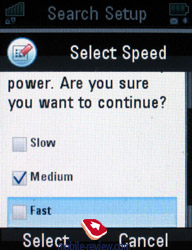

Impressions
There aren't any problems with speech's transformation, this is a typical Motorola phone. The ringtone's volume is average, and above average in case mp3 file is used. It's easy to hear the phone ringing even if it's carried in your clothes, vibrating alert is average or slightly above it.
It's really hard to conclude thoughts for this product, because there aren't any competitors on the market at the moment, and I don't think that there will be any for JUIX platform in the nearest future. The presence of powerful processor did not affect battery life, but instead it improved interface speed. The phone's weakest spot is its camera, it is below average. At the same time all other functions are really different from what we've seen on the market. Phone book, organizer, mp3-player, radio and profiles with separate sound setup, mass Bluetooth sending, surround sound, voice navigation Ц all functions are unique. You can say that one or other function lacks something for advanced user, but on the whole phone's functionality is not only overcomes common phones, it also makes some smartphones look inferior. The phone's size is not big at all, there are control keys for the player, the display is best in its class.
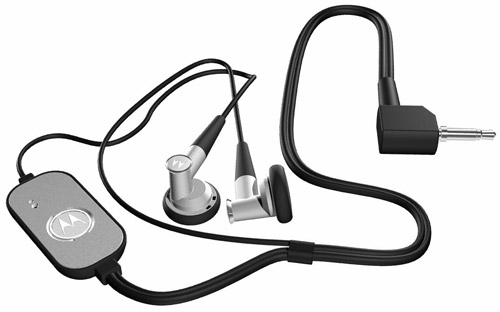
The model will be released in the end of June, at the beginning of July, in Europe too. The phone will cost around 320-350 Euros, which at first glance is kind of expensive especially if you take Sony Ericsson's Walkman brand's popularity into consideration. But on the other hand those who will find out about ROKR's E2 insights will not think that the price is high or anything, it's reasonable. The model is a revolution and will certainly become a hit, but what kind of hit? It all depends on Motorola . The phone doesn't have any competitors while being positioned as music phone, nearest ones will appear only in the end of 2006 and will have bigger size.
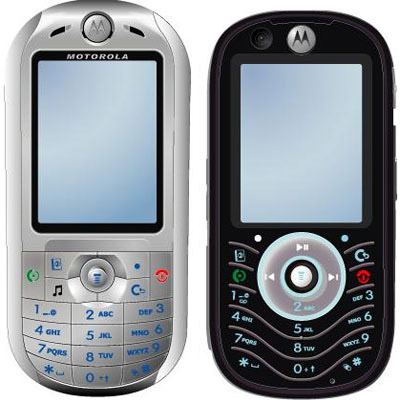
In future we will see a whole line-up of new models based on E2, in Autumn we will have E6. This phone will be presented in slider form-factor, carry 2mpx camera (same as in Motorola V3x) and most likely will have nVidia's hardware acceleration. UMTS support is present by default. The interface will be slightly improved, and such features as Picsel Browser will appear too.
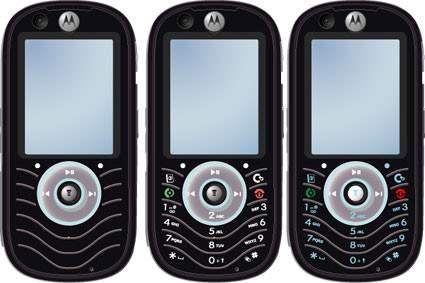
There are a lot of Motorola E3 sketches cruising on the net, I can say that they are real, but this model was cancelled long time ago and will not be released. The main development of ROKR line-up will occur in the first quarter of 2007.
P.S. In near future we are planning to compare all existing music phones with detailed review of their features. It will be interesting to see what results will be shown by ROKR E2.
For me personally E2 reminds of Timeport T280, which did not become a bestseller. Motorola's product spent too much time before being released on a number of markets, and was unable to compete with products from Siemens and Nokia. At that moment it had superior features, had a lot of improvements. In case with ROKR E2 we can see major superiority, this is a real great white shark for music phones. ROKR E1 was a failure as much as E2 is perfect. But this is not an ideal phone, there aren't any in our Universe. Today ROKR E2 is simply the best in it's kind, it does not have any analogues.
Eldar Murtazin (eldar@mobile-review.com)
Translated by Alexander "Lexx" Zavoloka (alexander.zavoloka@mobile-review.com)
Published — 10 February 2006
Have something to add?! Write us... eldar@mobile-review.com
|
News:
[ 31-07 16:21 ]Sir Jony Ive: Apple Isn't In It For The Money
[ 31-07 13:34 ]Video: Nokia Designer Interviews
[ 31-07 13:10 ]RIM To Layoff 3,000 More Employees
[ 30-07 20:59 ]Video: iPhone 5 Housing Shown Off
[ 30-07 19:12 ]Android Fortunes Decline In U.S.
[ 25-07 16:18 ]Why Apple Is Suing Samsung?
[ 25-07 15:53 ]A Few Choice Quotes About Apple ... By Samsung
[ 23-07 20:25 ]Russian iOS Hacker Calls It A Day
[ 23-07 17:40 ]Video: It's Still Not Out, But Galaxy Note 10.1 Gets An Ad
[ 19-07 19:10 ]Another Loss For Nokia: $1 Billion Down In Q2
[ 19-07 17:22 ]British Judge Orders Apple To Run Ads Saying Samsung Did Not Copy Them
[ 19-07 16:57 ]iPhone 5 To Feature Nano-SIM Cards
[ 18-07 14:20 ]What The iPad Could Have Looked Like ...
[ 18-07 13:25 ]App Store Hack Is Still Going Strong Despite Apple's Best Efforts
[ 13-07 12:34 ]Infographic: The (Hypothetical) Sale Of RIM
[ 13-07 11:10 ]Video: iPhone Hacker Makes In-App Purchases Free
[ 12-07 19:50 ]iPhone 5 Images Leak Again
[ 12-07 17:51 ]Android Takes 50%+ Of U.S. And Europe
[ 11-07 16:02 ]Apple Involved In 60% Of Patent Suits
[ 11-07 13:14 ]Video: Kindle Fire Gets A Jelly Bean
Subscribe
|










































































































































